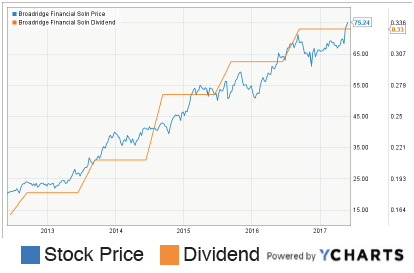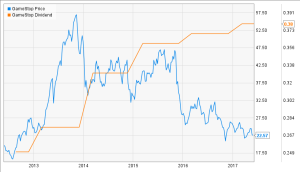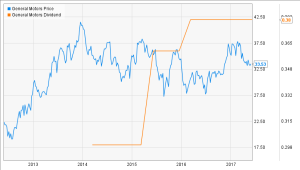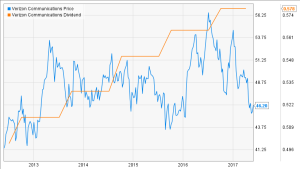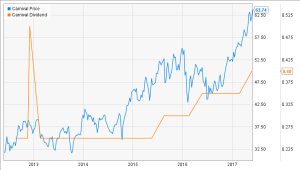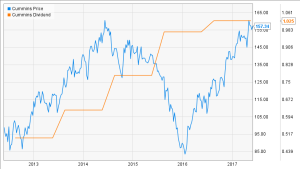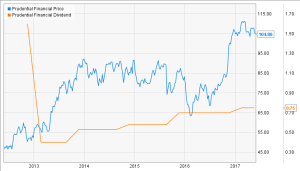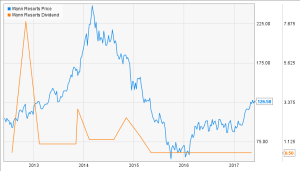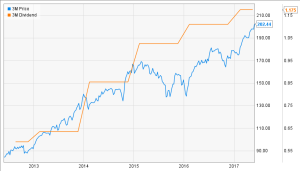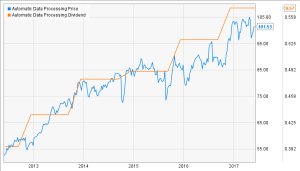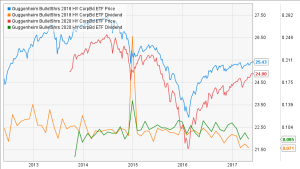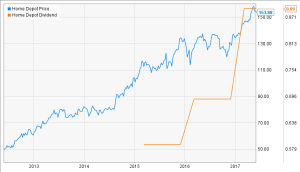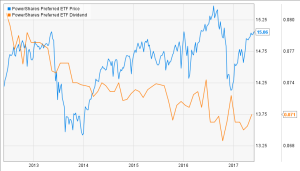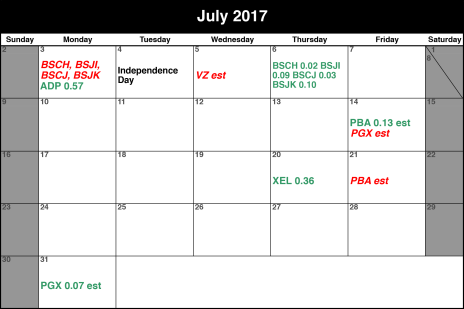In today’s issue, I add a mid-cap tech stock to the Dividend Growth tier, provide updates on all our holdings, and share some of my favorite investment resources.
Cabot Dividend Investor 517
[premium_html_toc post_id="134564"]
A Nice Rebound
The broad market has been behaving very well since the sharp Wednesday selloff two (short) weeks ago. That means we’re still overall bullish. Accordingly, this month’s new portfolio addition is growth-oriented. It’s also a tech stock and a mid-cap stock, both areas in which we could use more exposure (especially as tech stocks continue to lead the market).
One strange situation has arisen over the two weeks: investors have been aggressively buying conservative assets like utilities and high-yielding telecoms (and even fixed income), even as the market is rising.
[highlight_box]What To Do Now: Focus new buying on stocks and sectors that are benefiting from the market’s strength. Our healthiest positions today are Carnival (CCL), Wynn (WYNN) and 3M (MMM). Our new addition, Broadcom Financial Services (BR) also looks unstoppable. Lastly, I’m putting Home Depot (HD) on Hold while we wait for the retail shakeout to resolve, but there’s no reason to panic. [/highlight_box]
Featured Buy
Broadridge Financial Solutions (BR)
The Company
Though it has the word “financial” in its name, Broadridge is actually a tech company, providing solutions for the financial industry. The company offers a wide variety of tools that financial professionals use for everything from securities analysis to expense management. Broadridge also provides investor communication solutions, like distributing quarterly reports, processing proxy votes and hosting annual meetings.
Broadridge is constantly investing in new technologies, which both attracts new customers and consistently increases revenue-per-customer.
Broadridge delivers consistent EPS growth, averaging 26% per year over the past five years. Management has focused on growing recurring revenues in recent years, largely through acquisitions, to improve the stability of earnings even further.
Broadridge beat estimates by 15% in its latest earnings report, and four analysts have increased their estimates in the past month.
Analysts expect Broadridge to deliver 15% EPS growth this year and 16% growth next year. Sales are expected to rise 41% this year (thanks to a major acquisition—organic sales growth will likely be in the high single digits) and 6% next year. (The company’s fiscal year ends in June, so Broadridge is currently in the last quarter of fiscal 2017.)
The Dividend
Broadridge makes paying “a meaningful dividend” a high priority, and aims for a dividend payout ratio of at least 45% (based on prior year net earnings). Currently, the stock yields 1.8%.
The company has paid dividends consistently since its IPO in 2007, and has increased the dividend for nine years running. Over the past five years, the dividend increases have averaged 16% per year, earning BR a Dividend Growth Rating of 8.4 out of 10. The company’s dividend history and payout ratio of 51% contribute to the stock’s 6.6 Dividend Safety Rating.
The Stock
BR trades at a current P/E of 29 and a forward P/E of 22.
After consolidating for most of 2015, BR began a strong rally in January 2016, advancing from 50 to 71 with only minor pullbacks. But the stock ran into resistance in September, and the ensuing correction brought it briefly back down to 60. BR bottomed in November 2016, had returned to 70 by March of this year, and then began a 10-week consolidation.
BR then broke out to a new all-time high earlier this month, after May 10’s stellar earnings report. Since then, the stock’s progress has been nearly straight up, and it’s just now pausing for a quick breather around 75.
All signs point to more gains ahead for BR, and we’ll add the stock our Dividend Growth portfolio at tomorrow’s average price. Investors seeking growth and dividends can do the same.
| Broadridge Financial Solutions (BR) | ||
|---|---|---|
| Price: 75 52-week range: 59.86-76.03 Market cap: $8.77 billion P/E: 29 | Current yield: 1.8% Annual dividend: $1.32 Most recent dividend: $0.33 Dividend Safety rating: 6.6 Dividend Growth rating: 8.4 | |
| Dividends since: 2007 Consecutive years of increases: 9 Qualified dividends? Yes | Payment Schedule: Quarterly Next ex-dividend date: June 13, 2017 | |
Portfolio at a Glance
Closing Prices on May 30, 2017
Portfolio Updates
High Yield Tier
The investments in our High Yield tier have been chosen for their high current payouts. These ?investments will often be riskier or have less capital appreciation potential than those in our other ?two tiers, but they’re appropriate for investors who want to generate maximum income from their? portfolios right now.
HOLD – GameStop (GME 23 – yield 6.7%) – I put GME on Hold last Wednesday, the day before the company reported earnings, due to technical weakness. Unfortunately, the reaction to earnings was also negative, as I detailed in Friday’s Special Bulletin. Earnings beat expectations, but investors still found a few things not to like. Adjusted EPS fell 4.5%, to $0.63, beating the consensus analyst estimate of $0.51 by a wide margin. Revenues also beat estimates, rising 4.1% year-over-year to $2.05 billion (analysts were expecting $1.94 billion.) Nintendo’s new Switch console contributed to a 25% increase in new hardware sales. However, new software sales still fell 8%, and pre-owned sales (which account for 36% of profits) fell 6%. GameStop’s new businesses remain healthy: digital sales grew 3%, collectibles sales rose 39% and technology brands sales rose 22%. International sales outpaced U.S. sales, in part because Nintendo’s non-U.S. Switch distribution was more generous toward GameStop. The international stores have also been able to convert square footage to collectibles more quickly. The tech brands stores saw some expected weakness because of a lack of new phone launches; management expects a big bump when the iPhone 8 launches in the second half of the year. Management reiterated full-year guidance of $3.10 to $3.40 in EPS. GME remains well within its trading range, and is starting to recover this week. We’ll hold. Next ex-div date: June 5, 2017
HOLD – General Motors (GM 34 – yield 4.5%) – GM once again bounced at 32 late last week, after news broke of an emissions cheating lawsuit against the company. Hagens Berman, a law firm involved in the similar suit against Volkswagen, has filed a class action suit alleging that GM rigged 705,000 diesel vehicles to cheat on emissions tests. That’s more than the 500,000 involved in the similar VW suit, although the magnitude here is much smaller: the suit claims that GM vehicles’ emissions are two to five times higher than allowed by law, compared to the 40 times higher emissions in the VW suit. So far, there’s no proof that any cheating occurred and GM has called the suit “baseless.” More important, the market doesn’t seem concerned; after Thursday’s pullback, GM is trading above where it closed last Wednesday (since our last update, the stock is up 1.9%.) Strong May sales forecasts likely contributed; Kelley Blue Book said yesterday that they expect GM’s sales to rise 3.1% this month, compared to an 0.2% improvement for the industry overall. GM remains a Hold for risk-tolerant High Yield investors. Next ex-div date: June 7, 2017
BUY – Pembina Pipeline (PBA 32 – yield 5.4%) – PBA pulled back slightly this week, as oil backed off from its recent high. The stock is well within its trading range, and risk-tolerant High Yield investors can buy a little here. Nine analysts have raised their earnings estimates in the past 30 days. Next ex-div date: June 21, 2017 est.
HOLD – Verizon (VZ 46 – yield 5.0%) – Verizon’s bottom from two weeks ago is still holding, and so are we. The stock got a nice boost yesterday, along with dividend-paying peer AT&T (T). That’s probably a sign of increasing uncertainty among investors, since non-dividend-paying Sprint (S) and T-Mobile (TMUS) did not rally. Hold. Next ex-div date: July 5, 2017 est.
Dividend Growth Tier
To be chosen for the Dividend Growth tier, investments must have a strong history of dividend increases and indicate both good potential for and high prioritization of continued dividend growth.
BUY – Carnival (CCL 64 – yield 2.2%) – CCL continues its perfect uptrend. If you have double-digit profits, like we do, feel free to take some off the table (we’ll wait until we get a little less constructive about either the stock or the market). Carnival received another analyst upgrade last week. Dividend Growth investors can buy on pullbacks. Next ex-div date: August 24, 2017 est.
BUY – Cummins (CMI 157 – yield 2.6%) – After bouncing off 150 two weeks ago, CMI is steadily heading back to its recent highs. Ten analysts have increased their current year estimates over the past month; EPS are now expected to rise 13% backed by 5% revenue growth. (Up from 5% and 0% growth when we first bought the stock.) Investors who want reliable dividend income and a good likelihood of medium-term capital appreciation can buy CMI here. Next ex-div date: August 18, 2017 est.
HOLD – Prudential Financial (PRU 105 – yield 2.9%) – PRU traded sideways this week, puttering around 105. While I’m not impressed with the recent action, the stock’s longer-term range between about 102 and 110 remains intact, so we’ll hold. Next ex-div date: August 18, 2017 est.
BUY – Wynn Resorts (WYNN 127 – yield 1.6%) – WYNN continued to consolidate this week. Its rest is normal after April’s gap up. The stock could trade here, between 120 and 129, for a few more weeks. On the other hand, Macau estimates are rising, so we might see another rally before too long. Five analysts have increased their estimates for WYNN in the past month. Investors whose primary goals are growth and dividend growth can buy here. Next ex-div date: August 9, 2017 est.
Safe Income Tier
The Safe Income tier of our portfolio holds long-term positions in high-quality stocks and other investments that generate steady income with minimal volatility and low risk. These positions are appropriate for all investors, but are meant to be held for the long term, primarily for income—don’t buy these thinking you’ll double your money in a year.
BUY – 3M (MMM 202 – yield 2.3%) – MMM hit a new all-time high yesterday, after breaking through (very short-term) resistance at 200. We never complain about stocks hitting new highs. Investors interested in long-term capital appreciation and safe income can buy on any small pullback. Next ex-div date: August 16, 2017 est.
HOLD – Automatic Data Processing (ADP 102 – yield 2.2%) – After gapping down on earnings early this month and then stagnating just above its 200-day moving average, ADP staged a solid rebound over the past two weeks and closed higher on each of the last eight trading days. I’m not going to put it back on Buy yet, but the rally certainly improves our opinion. Safe Income investors can hold. Next ex-div date: June 7, 2017.
HOLD – Consolidated Edison (ED 82– yield 3.4%) – ED hit a new all-time high on Friday, as the utility sector rally stretched into its second week. Safe Income investors can hold. Next ex-div date: August 14, 2017 est.
HOLD – Guggenheim BulletShares 2017 Corporate Bond ETF (BSCH 23 – yield 1.1%)
BUY – Guggenheim BulletShares 2018 High Yield Corporate Bond ETF (BSJI 25 – yield 4.0%)
BUY – Guggenheim BulletShares 2019 Corporate Bond ETF (BSCJ 21 – yield 1.8%)
BUY – Guggenheim BulletShares 2020 High Yield Corporate Bond ETF (BSJK 25 – yield 4.8%)
I’m switching the rating on our nearest-dated bond fund, BSCH, to Hold today, since we’ll be selling it in a couple of months. If you’re looking to start a new bond ladder today, start with the 2018 fund as your nearest-dated position (and add a 2021 fund if you’d like to build a four-year ladder.) As a reminder, a bond ladder is a conservative strategy for owning fixed income that’s particularly good at preserving capital when interest rates are rising. Each ETF will mature at the end of the year in the fund’s name, and Guggenheim will distribute the net asset value (NAV) of the fund to shareholders at that point—just like getting your principal back when a bond matures. Because of this maturity feature, these bond funds don’t lose value when interest rates rise, like traditional bond funds. At the end of each year, we’ll sell that maturing fund and reinvest the proceeds into a new longest-dated ETF to preserve the bond ladder. The funds pay distributions monthly. Next ex-div date: all June 1, 2017 est.
HOLD – Home Depot (HD 154 – yield 2.3%) – HD has pulled back over the last two weeks, largely due to a broad selloff in retail stocks. We have a 22% profit but have already sold half our shares, and I don’t want to make the position too much smaller. If you still have a full position and a similar profit cushion, you could take some off the table now, in case this retail selloff drags on. HD itself is healthy as a horse; 26 analysts have raised their estimates in the past 30 days (after Home Depot reported estimate-beating earnings earlier this month). But I’ll put the stock on Hold for now, while we wait for this turbulence to pass. Next ex-div date: September 5, 2017 est.
HOLD – PowerShares Preferred Portfolio (PGX 15 – yield 5.5%) – PGX is a Hold for investors who want reliable monthly income. The preferred share ETF doesn’t have capital appreciation potential, but it trades in a low-volatility range between 14 and 16 and pays monthly dividends of about seven cents per share. Next ex-div date: June 15, 2017 est.
HOLD – Xcel Energy (XEL 48 – yield 3.0%) – Like ED, XEL is rising with the rest of the utility sector, and is at all-time highs. If you own it, hold on and enjoy the yield. If you haven’t taken any profits yet, feel free to take some now. Next ex-div date: June 13, 2017
Dividend Calendar
Ex-Dividend Dates are in RED and italics. Dividend Payments Dates are in GREEN. See the Guide to Cabot Dividend Investor for an explanation of how dates are determined and what estimated dates mean.
How to Write Covered Calls
If you’re like most of our members, you do some stock research on your own on top of reading the information in Cabot Dividend Investor. There are thousands of places to get free investing information online, and I’m sure you have your favorites, but today I want to share some of the sources that I have found most useful, reliable and unique. One of them may be able to give you a new perspective on some of the stocks you own.
Basic Information
For a quick look at any stock, I find Google Finance (google.com/finance) and Yahoo! Finance (finance.yahoo.com) fairly comparable . Both provide basic information like prices, trading volume and P/E ratios, and some basic earnings data. Yahoo has a bit more information, but also more annoying ads. I like Google’s charts better.
You can also find a lot of basic information on most brokers’ websites.
Financial Data
Morningstar is the best free source of financial data I know (morningstar.com). Their site supplies 10 years of annual financial information for free, as well as five years of more detailed financials (and five quarters of quarterly data). If you want to look up payout ratios, margins, cash flow or debt levels, go here. It also has good valuation data, including current and forward P/E ratios, price-to-book ratios and PEG ratios.
Analyst Estimates and Opinions
You can find a large number of analyst estimates on both Zacks (zacks.com) and Yahoo Finance. Both have some gaps in their knowledge—if you don’t see any analyst estimates on one, check the other. They usually have slightly different numbers, but you can get a good idea of earnings growth estimates and whether analyst estimates have been moving up.
I rarely read research reports, but if you’re interested in analyst opinions, many brokers provide their customers with access to analyst research.
News
Seeking Alpha is good at aggregating all the recent news, press releases and analyst comments about a stock. They’re also a reliable source of earnings call transcripts. If you create a portfolio on their site (free), you can also sign up for email alerts on your stocks. However, I suggest you take “analysis” by Seeking Alpha contributors with a grain of salt; while some are intelligent, most are not professionals (and some have conflicts of interest.)
Technical Analysis
I don’t do as much technical analysis as some of my Cabot growth colleagues, so I usually find Google Finance charts work fine for my needs. I use yCharts when I want to make and export nicer-looking charts (creating more than a couple a month requires a premium subscription). They also have a wide range of economic data, so you can chart the utilities index against interest rates, for example.
Dividend Information
Yahoo Finance keeps a comprehensive list of every dividend a stock has ever paid (go to Historical Data, show Dividends Only, and set the date range to max).
For pre-digested dividend information, such as how many years in a row a stock has increased its dividend, go to Dividend.com. Their site is also one of the most reliable and up-to-date sources of ex-dividend dates and payment dates.
Investing Ideas
Stock screeners are a great way to find new investment ideas you may not have thought of. (I recommend them above trolling the Internet for stocks other people are writing about.)
The free screener on Finviz.com offers plenty of functionality for most investors (finviz.com/screener.ashx). Just set some parameters, like yield, industry or EPS growth expectations, and the screener will return a list of stocks that may be interesting to you.
Other Information
Investopedia has loads of free articles on investing terms, concepts and strategies. It’s the place to go when you have questions like “what’s a standard deviation?” or “how are MLP distributions taxed?”
MarketWatch compiles a nice list of weekly economic reports, and includes analyst expectations vs. the results (marketwatch.com/economy-politics/calendars/economic).
Bloomberg is a good source of price information on commodities and currencies (bloomberg.com).
As for interest rate data, CNBC and MarketWatch both chart 10-year yields, a quick way to check which way interest rates are moving (cnbc.com/quotes/?symbol=US10Y). For more detailed information on interest rates, including the yield curve, I use the U.S. Treasury’s website (treasury.gov). And you can check one measure of rate hike expectations using CME Group’s FedWatch tool (cmegroup.com/trading/interest-rates/countdown-to-fomc.html).
Cabot Website
Of course, I’d be remiss not to mention our own website, CabotWealth.com, where you can watch our weekly videos, read all the back issues of our advisories, and find great educational articles and timely market commentary. Prime members also get a weekly digest of our recommendations, a weekly Q&A, and a quarterly market report and conference call.
[premium_html_footer]
Your next issue will be published June 28, 2017
Cabot Wealth Network • 176 North Street • Salem MA 01970 • 978-745-5532
Neither Cabot Wealth Network nor our employees are compensated by the companies whose stocks we recommend. Sources of information are believed to be reliable, but are in no way guaranteed to be complete or without error. Recommendations, opinions or suggestions are given with the understanding that subscribers acting on the information assume all risks. © Cabot Wealth Network. Copying and/or electronic transmission of this report is a violation of U.S. copyright law. For the protection of our subscribers, if copyright laws are violated, the subscription will be terminated. To subscribe or for information on our privacy policy, call 978-745-5532, visit www.cabotwealth.com or write to support@cabotwealth.com.
[/premium_html_footer]

